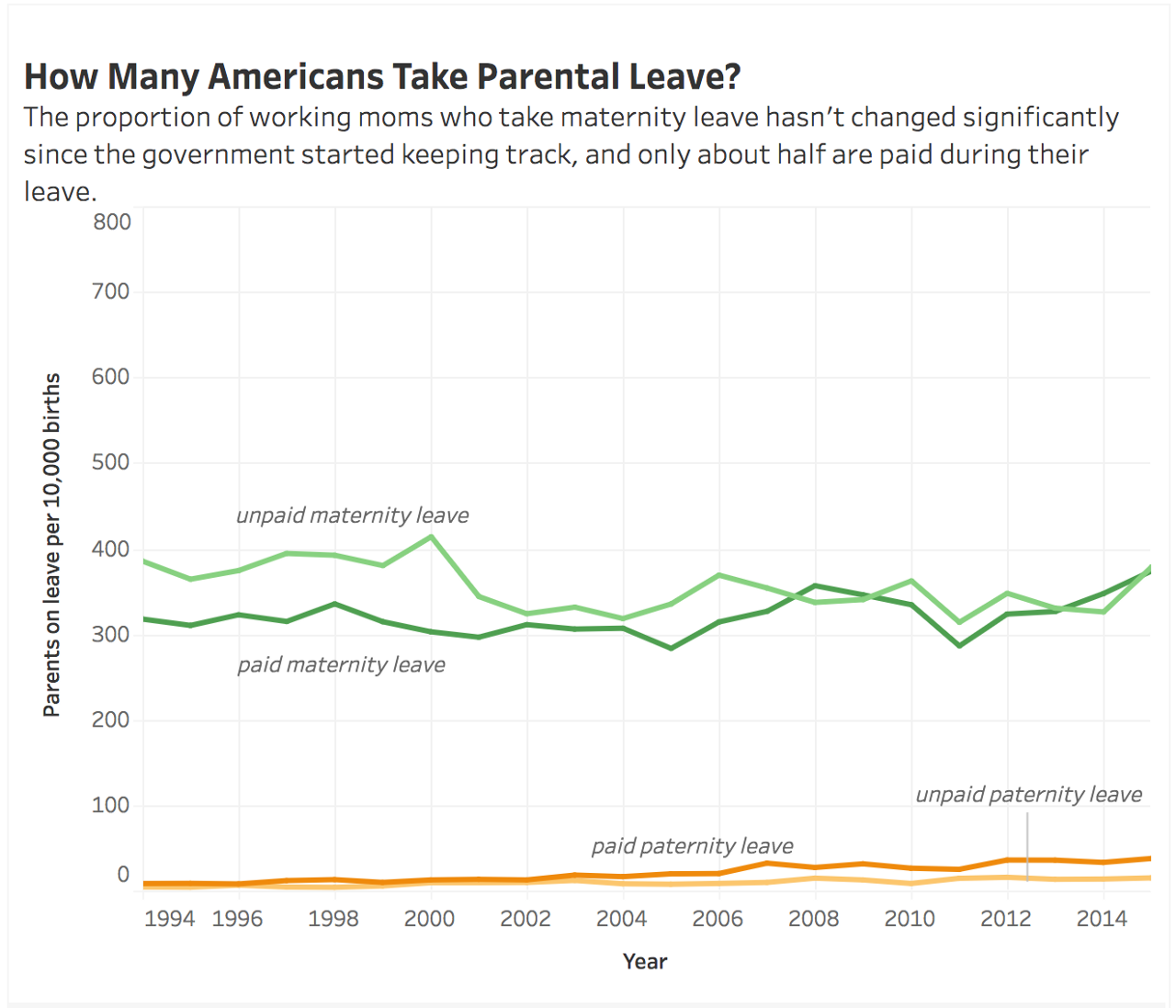You probably already know the U.S. has terrible parental leave laws. New numbers suggest that even the policies we have aren’t working, because people can’t afford to take advantage of them.
By Francie Diep
(Photo: Fiona Goodall/Getty Images)
You probably already know the United States has some of the worst parental leave laws in the world. Among the 41 countries that make up the Organization for Economic Cooperation and Development, the U.S. is the only one with no guaranteed paid time off to care for a new baby. But it’s hard to say how these laws actually affect new parents, since no federal agency collects data on how many workers take parental leave. A few recent analyses, however, might offer some clues.
It turns out that few American mothers take maternity leave and their numbers haven’t changed significantly since the Bureau of Labor Statistics began asking more than 20 years ago, according to a study published today in the American Journal of Public Health. Less educated new mothers are less likely to take long leaves, In These Times magazine found in 2015. Being unable to afford leave is probably an important factor: In 2004, California enacted its own paid parental leave law, but it only guaranteed new parents 55 percent of their original paycheck, up to a limit. A survey found that one-third of eligible workers passed on leave because it didn’t pay them enough. That means the kids of poor parents are less likely to reap the benefits of paid maternity leave, which is associated with babies breastfeeding for longer and receiving all their recommended immunizations.
Below, you can check out America’s rates of parental leave over time. Note that the numbers mean that, for every 15 babies born in the U.S. every month, only one working adult is taking parental leave. Stay-at-home moms aren’t enough to account for the gap: In 2015, 70 percent of women with children were working or looking for employment, according to government figures.

Data from Divergent Trends in US Maternity and Paternity Leave, 1994–2015, by Jay L. Zagorsky in the American Journal of Public Health. (Chart: Tableau Public/Pacific Standard)
“Since 1994, since the data begin, month by month, the maternity leave figures bounce around a lot, but there’s no upward or downward trend over time. It’s basically flat,” says Ohio State University economist Jay Zagorsky, who found and analyzed the data above. “This is surprising because the economy, since 1994, grew by about two-thirds. We are two-thirds richer as a society and we’re basically still giving the same maternity leave as we did in the 1990s. Usually when societies get richer, they’re providing more benefits to workers.”
Those few who do take leave seem to have more resources to begin with. Eighty percent of working moms who had graduated from college took at least six weeks off, In These Times found, compared to only 54 percent of female workers without a college degree. Almost one in four American moms took off two weeks or less, often putting them back to work before they’d fully recovered from delivering, and while their newborns still needed frequent feedings and care.
In Zagorsky’s data, paternity leave rates and paid maternity leave rates have risen significantly since the 1990s, even if overall maternity leave rates haven’t. But the former are very small, compared to maternity-leave numbers, and the latter are growing so slowly, it would take almost 200 years for them to reach 100 percent. “That’s a little less than how long the entire country of the United States has been in existence,” Zagorsky notes.





